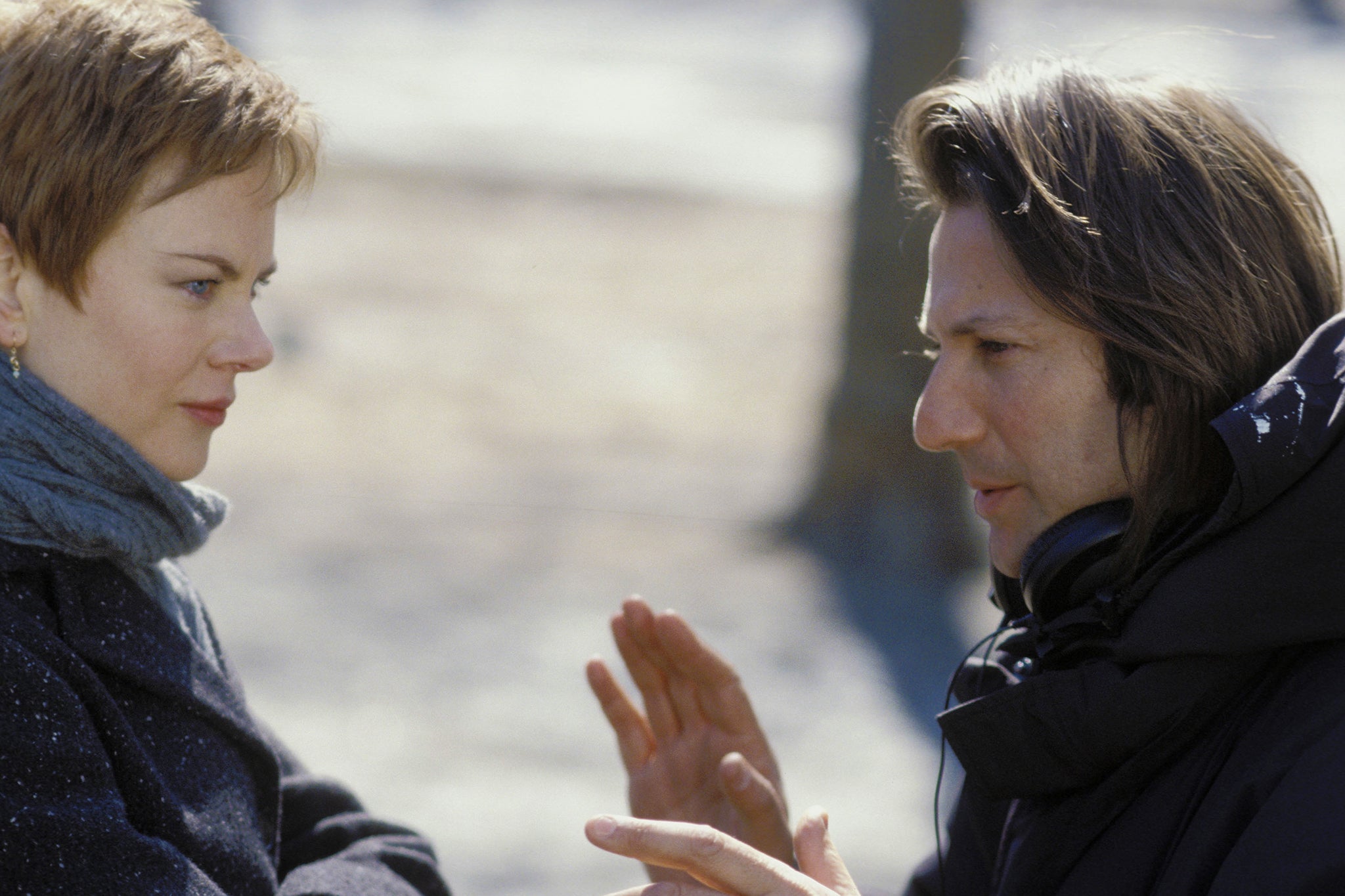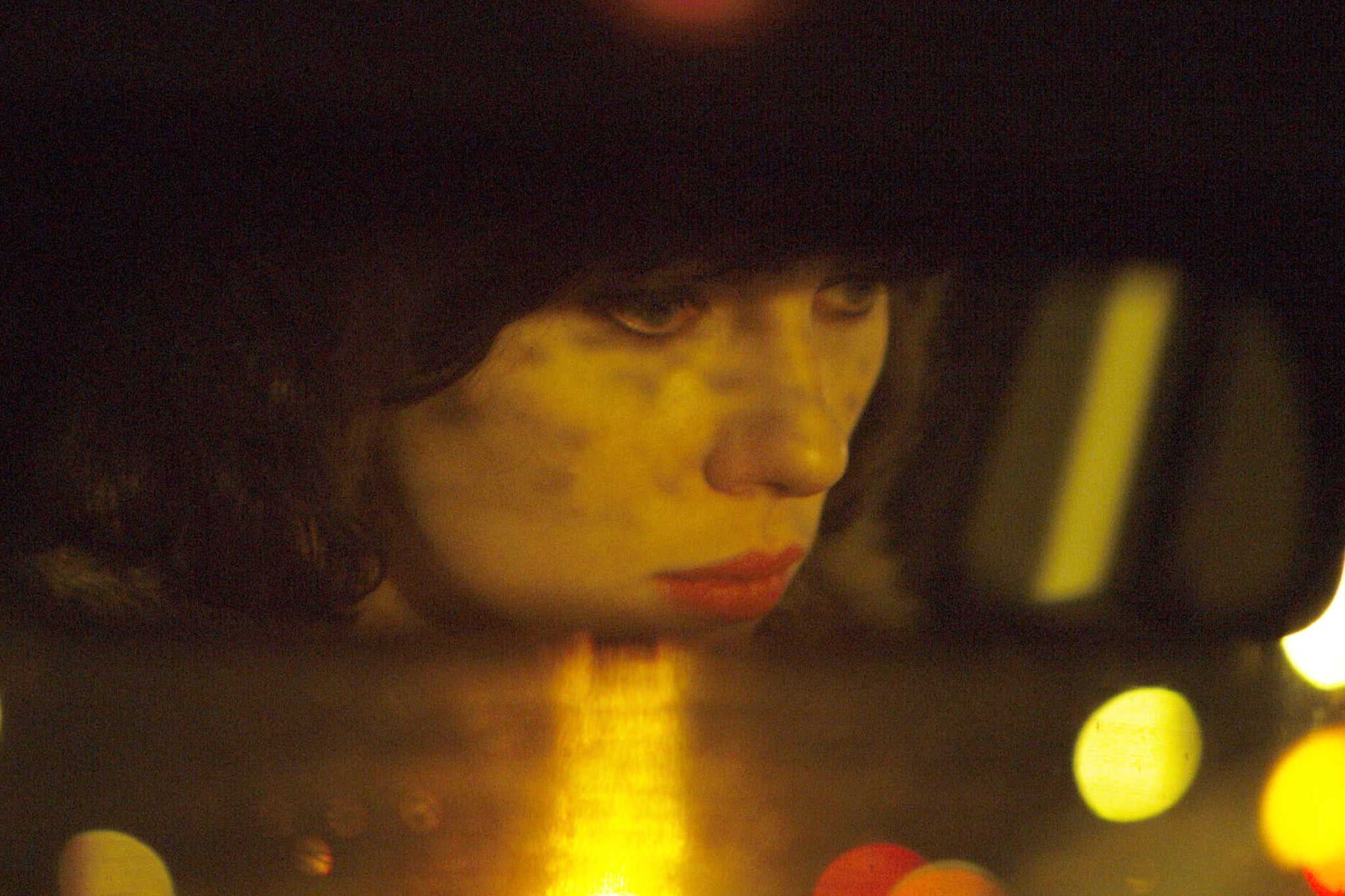How Jonathan Glazer became Britain’s most mysterious filmmaker: ‘He always takes things to the edge of beyond’
With the release of his fourth film ‘The Zone of Interest’ – which has just earned him a Best Director nod at the Oscars – the man behind ‘Sexy Beast’ and ‘Under the Skin’ has confirmed himself as a mercurial visionary. Adam White speaks to close collaborators past and present – including Ray Winstone and Amanda Redman – to solve the enduring mystery of the Gen-X Kubrick


Your support helps us to tell the story
From reproductive rights to climate change to Big Tech, The Independent is on the ground when the story is developing. Whether it's investigating the financials of Elon Musk's pro-Trump PAC or producing our latest documentary, 'The A Word', which shines a light on the American women fighting for reproductive rights, we know how important it is to parse out the facts from the messaging.
At such a critical moment in US history, we need reporters on the ground. Your donation allows us to keep sending journalists to speak to both sides of the story.
The Independent is trusted by Americans across the entire political spectrum. And unlike many other quality news outlets, we choose not to lock Americans out of our reporting and analysis with paywalls. We believe quality journalism should be available to everyone, paid for by those who can afford it.
Your support makes all the difference.Ray Winstone wanted to go to bed, but Sexy Beast was on the telly. “I said I’d watch 10 minutes then head off,” he remembers. At least until his retired gangster is lying there in his Speedos, browning in the Andalucían sun like a Cockney lamb shank. “But it just kept drawing me in.” He ended up watching the whole thing – the safe-cracking, the orgies, Sir Ben Kingsley at his most foul-mouthed. “Why aren’t all films made like that?” Winstone asked himself. “Probably because there’s not too many Johnnys about.”
Johnny, John, or – as Winstone calls him more than once in conversation – “old Johnny-boy” is Jonathan Glazer: madman, mystery and Britain’s greatest living filmmaker. Glazer’s movies live on the far reaches of convention; delicious, disconcerting spins on genres we think we know. Released in 2000, Sexy Beast is a guns-and-gangsters Britflick chimera, as gorgeous and heartsick as it is grotesquely violent. Its follow-up Birth (2004) is an aberrant fairytale, Nicole Kidman teasing the thin line between grief and insanity. Nearly a decade later, with the Scarlett Johansson-fronted alien invader movie Under the Skin (2013), Glazer airdropped a Hollywood star into a Glasgow at its most unglamorous, making her ride the bus, collide with hen-dos, and walk past Clintons Cards.
This week marks the release of Glazer’s Oscar-nominated The Zone of Interest, a Holocaust film in which the Holocaust takes place entirely off-camera; a domestic drama soundtracked by screams and gunfire from across the way, and anchored by the most nonchalant Nazis put to film. It is without question one of the most unusual and unrelenting horror movies in recent memory, and yet another Glazer film almost demonstratively different from the one before it. But that only reiterates the appeal of Glazer’s work. Over the course of nearly 25 years and just four films, his disinterest in an easily identifiable visual and narrative language has become its own kind of trademark.
Glazer’s films are narratively tricky and formally sparse. Coupled with his slight reticence to be interviewed, and the guardedness of the answers he tends to give, he’s something of an enigma. The 58-year-old’s attention to detail and the years it takes to bring his work to the screen have lent him the image of a Gen-X Kubrick, with all the scariness that implies. Those who know him and occupy his inner circle, though, find the idea of Glazer as an obsessive tyrant slightly ludicrous.
“Just because the work is very thorough and rigorous doesn’t mean that the people involved in it can’t get a massive appreciation from it,” says Paul Watts, Glazer’s editor on Under the Skin and The Zone of Interest. “It’s so rewarding and enjoyable because he’s gathered a group of people who are all putting their shoulder to the wheel too.”
Long before he began making films, Glazer was one of the most in-demand commercial directors in advertising, helping define the look and tone of expensive, artistic, late-Nineties cool. You will remember much of his work: for Guinness, the surfers riding waves with enormous white horses, or the Italian villagers celebrating the annual swimming race with a pint. Then there were his music videos: Jay Kay slipping and sliding around a moving room for Jamiroquai’s “Virtual Insanity”; Thom Yorke in the backseat of a car as it chases after a man on a long, dark road for Radiohead’s “Karma Police”.
Johnny’s passion for Birth was immense. But I think he found out a lot of things about making movies for studios when making that film. A lesser director can have their hearts broken by that kind of interference
His growing reputation made working for him on his film debut a tantalising prospect. “My agent didn’t want me to do Sexy Beast,” remembers Amanda Redman, who plays Winstone’s retired porn star wife. “She said to me, ‘Look, it’s not a big enough part, and I think it’s kind of obscene.’ She didn’t take to it at all until she saw it. But I insisted on doing it simply because I could see a lot more in it. I thought it was clever, almost Shakespearean.”
Sexy Beast shares the polished, violent rhythms of Guy Ritchie, that era’s king of hardman hooey, but its aspirations are higher. It’s darker, stranger and incredibly romantic. Winstone suns himself while an enormous boulder careens into his swimming pool, Indiana Jones-style. A demonic, human-sized bunny rabbit haunts his nightmares. Redman’s character appears in a cloud of smoke shaped like a love heart. When Winstone is forced to take part in a heist by Kingsley’s psychotic kingpin, he promises Redman it’ll be his last score while pledging to her his eternal devotion: “I love you like a rose loves rainwater,” he insists. “Like a leopard loves its partner in the jungle.”
Reviews were mixed upon release and the film didn’t make any real money, setting up a trend for Glazer’s films. They become cult hits, heralded with time – look no further than Paramount+ debuting a prequel series, sans Glazer’s involvement, just this month. At first blush, though, they feel – rightly or wrongly – wild and askew. Only The Zone of Interest, which has been met with universal acclaim and truckloads of awards, and will compete for Best Picture and Best Director at this year’s Oscars, seems to buck the trend. “I think a lot of his stuff can be quite shocking for people,” Redman suggests. “It takes time to go deeper with it.”

Watch Apple TV+ free for 7 days
New subscribers only. £8.99/mo. after free trial. Plan auto-renews until cancelled

Watch Apple TV+ free for 7 days
New subscribers only. £8.99/mo. after free trial. Plan auto-renews until cancelled
Glazer famously spends years developing single ideas. Even his adaptations – both Under the Skin and The Zone of Interest have their origins in novels by Michel Faber and Martin Amis, respectively – are incredibly loose, products of development processes in which stories are pared back to their fundamentals and stitched into something new. Winstone remembers Glazer talking about Birth even on the set of Sexy Beast in 1999. It would take five years to fully manifest, becoming Glazer’s first and, to date, last feature-length Hollywood adventure.
Birth revolves around Anna, a wealthy Manhattan widow due to remarry. One day, a 10-year-old boy arrives at her doorstep claiming that he is the reincarnated spirit of her dead husband, a claim Anna first finds cute, then frightening, then seductive. Kidman descends into a kind of stunned psychosis, while a murderer’s row of acting greats (among them Lauren Bacall, Peter Stormare, Arliss Howard and the late Anne Heche) orbit her with mouths agape.

Though it maintains a rabid fanbase, the film is arguably Glazer’s least talked-about masterpiece, a possible product of its critical and commercial drubbing upon release. At the film’s Venice Film Festival premiere, audiences greeted it with boos. Reviews called it “ridiculous” and “implausible”; others criticised the apparent creepiness of a scene in which Anna and her child suitor share a bath, as if it were intended to be anything but completely mortifying. Birth at least has a better reputation today, reappraised as a wintery thriller thrumming with erotic longing and dream-like claustrophobia. But its production was difficult, Glazer clashing with studio heads over his vision. Kidman had to repeatedly advocate on his behalf, fighting for more money to complete it – in 2015, in her “73 Questions” interview video for Vogue, she’d call Birth the one film in her long career she’d wished had been paid more attention.
“Johnny’s passion for Birth was immense,” Winstone recalls. “But I think he found out a lot of things about making movies for studios when making that film. A lesser director can have their hearts broken by that kind of interference.”
Watts began working with Glazer in the aftermath of Birth, and recalls him discussing his struggles for control on his first two films. It meant lifting himself out of the studio space, and gathering collaborators and financiers more willing to let his ideas run amok. “There wasn’t a lengthy period between Sexy Beast and Birth, but then there was a 10-year gap before Under the Skin,” Watts says. “I think that pause was partly in order to gather the right partners, to allow him to make his work on his terms. He always takes things to the edge of beyond.”
Under the Skin is, if nothing, a singular vision – abstract, otherworldly, uniquely horrible. Scarlett Johansson arrives from outer space and lands in Glasgow, where she lures men into her van under the pretence of companionship, before feeding them into a black gloop. The dense mythology of Faber’s novel is entirely abandoned, replaced by a pulsating, sensual, terrifying mood. “There is a liminal, complex nature to Jon’s work,” Watts says, “and the central question when we’re working is always ‘What does it feel like?’. I think it asks for an investment from the viewer, and can lead to questions like ‘OK, what the f*** is he trying to achieve here?’. But the pieces invariably fall into place, the intention is delivered, the feeling lands.”

The film toys with both warmth and horror, with horror winning in the end. Before that, though, Johansson’s visitor begins to feel – to almost absorb human empathy by proxy. She studies herself in the mirror, she taps her finger in rhythm to a song by Deacon Blue, she finds the taste of chocolate cake so new, so rich in pleasure, that she spits it out in amazement. Humanity is a curiosity, but also something quietly remarkable. Glazer shoots the most banal images of modern life with such alien detachment that they become profound: chatting mums with prams, lads leaving the football, the shuffling of the elderly outside M&S. It’s not so bad, is it? This thing we’ve got here. But then, as so many things tend to do, it all goes to hell.
Adam Pearson, who has the genetic condition neurofibromatosis, was cast as a man picked up by Johansson on the side of the road, and who seems to unlock her compassion. “This was my first acting gig and I had no training whatsoever,” he recalls. “I needed help being brought out of my shell, and I was incredibly fortunate I had very kind and patient expert hands to work with.” He, Glazer and Johansson met to discuss their scene together before filming, with Pearson using his own experiences as inspiration for their dialogue. Johansson’s character asks him questions about his life and his traumas, seems spellbound by the uniqueness of his face, and marvels at the beauty of his hands. “People will often come up to me and say that it’s their favourite scene in the film,” Pearson says. “If it wasn’t for Under the Skin, I would more than likely be in some kind of middle management job in marketing, and deeply frustrated.”

Pearson talks at length about Glazer’s generosity and his enduring friendship (“I’ve even been to his house for a barbecue”), painting a picture of a man who is affable and friendly… and who just happens to make deeply disquieting cinema about monsters and madness. That said, his films aren’t entirely cold or cynical, either, despite their rich sense of dislocation. Glazer doesn’t seem to be an optimist – he’s too smart for that – but all of his movies do feel tinged with hope. That love can prevail over violence. That someone isn’t necessarily gone when they die. That the coldest of creatures can be won over by our art and our compassion.
And while The Zone of Interest is set during a horrifying real-world atrocity – and Mica Levi’s electronic score drones and boils hellishly over the top of it – one of its most enduring images is of a Polish teenager covertly delivering apples to the camp at night-time. We follow her under thermal imaging cameras, lending her the appearance of a nocturnal animal we’re not meant to see. She’s the film’s one symbol of hope; of bravery and goodness amid savagery. It’s a reminder that for all of Glazer’s chilly auteurism, he is fundamentally compelled by humanity, desire and the pursuit of love. If never in the same place twice.
“One of the things that’s always astonished me about John is that he hits these bullseyes every time, then doesn’t repeat them,” Watts says. “There are so many people who hit a bullseye and go, ‘OK, I’m comfortable in this sphere and I can do it, so I should keep doing it.’ But that’s not him.”
‘The Zone of Interest’ is in cinemas from 2 February
Join our commenting forum
Join thought-provoking conversations, follow other Independent readers and see their replies
Comments